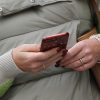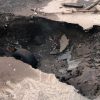
The AI algorithm, known as Artuμ, flew this week alongside a human pilot on a U-2 Dragon Lady spy plane
A US military aircraft has flown for the first time with an Artificial Intelligence robot as co-pilot, technology which could one day give America a huge edge over adversaries in the skies.
The AI algorithm, known as Artuμ, flew this week alongside a human pilot on a U-2 Dragon Lady spy plane assigned to the 9th Reconnaissance Wing at Beale Air Force Base in California.
The flight was part of a scenario which pitted the AI against another dynamic computer algorithm in order to prove the new technology.
After takeoff carried out by human pilot US Air Force Maj. “Vudu”, the controls were handed off to Artuμ, named after the Star Wars droid R2-D2, which was put in charge of the radar and sensor systems.
Artuμ was tasked with looking for incoming missiles and missile launchers. For the purposes of the initial test flight, the AI got the final vote on where to direct the plane’s sensors.
It used its knowledge learned from over a half-million computer simulated training iterations. Artuμ is based on a gaming algorithm known as µZero, which has been used to beat human players in chess.
“We know that in order to fight and win in a future conflict with a peer adversary, we must have a decisive digital advantage,” said Gen. Charles Brown Jr, Air Force Chief of Staff. “AI will play a critical role in achieving that edge. We must accelerate change and that only happens when our Airmen push the limits of what we thought was possible.”
The test flight was the result of years of concerted effort within the Air Force to apply cutting-edge technology to military operations as it competes with other world powers in the digital age, the US military said in a statement.
“Like any pilot, Artuμ has strengths and weaknesses,” Will Roper, Air Force acquisition executive, tweeted in an announcement of the news. “Understanding them to prep both humans and AI for a new era of algorithmic warfare is our next imperative step. We either become sci-fi or become history.”
Although Artuµwas developed to take away from the pilot’s workload in a U-2, it can be modified for use by other combat planes, the service said.
The reconnaissance plane, built by Lockheed Martin, is capable of flying at an altitude of 68,000ft, on the edge of space, where humans would be unable to travel without a spacesuit. From that height they are capable of taking images of ground target sites with high-resolution cameras.
The US faces competition in this arena from both China and Russia, which are investing heavily in artificial intelligence systems and are ahead of the US in some areas.
There have been no public references to tests involving robotic flight engineers or navigators by either countries, though it is possible they were conducted secretly.
The spy plane first flew in 1955. In 1960 one was shot down by a Russian surface-to-air missile while engaged in a flight deep inside the Soviet Union.
Back on land, meanwhile, US authorities on Thursday expressed increased alarm about an intrusion into computer systems around the globe that officials suspect was carried by Russia.
The cybersecurity unit of the Department of Homeland Security said that the hack “poses a grave risk to the Federal Government and state (…) governments as well as critical infrastructure entities and other private sector organizations.”
It was the most detailed comments yet from the Cybersecurity and Infrastructure Agency since reports emerged this weekend that government agencies including the Treasury and Commerce departments were among those whose secure data and email were penetrated by the sophisticated hack.























































Свежие комментарии